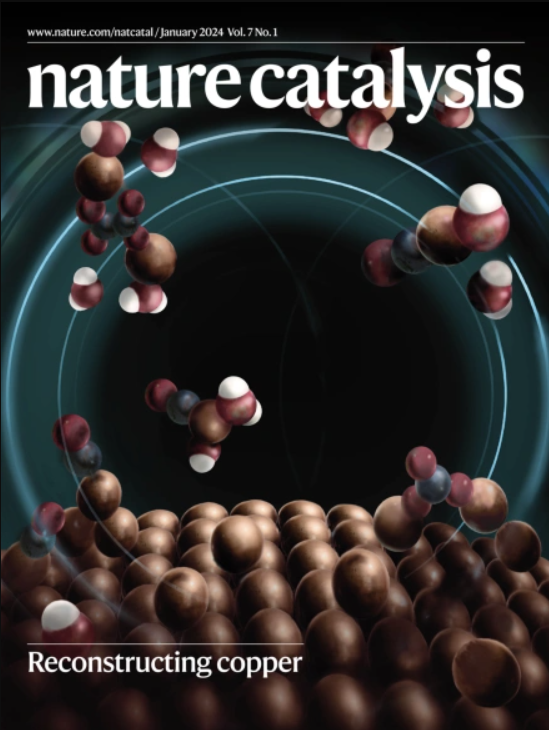调制探测接口
IF 44.6
1区 化学
Q1 CHEMISTRY, PHYSICAL
引用次数: 0
摘要
现在,Dimosthenis Sokaras, Junko Yano及其同事使用调制激发x射线吸收光谱以时间分辨的方式在电极-电解质界面处原位捕获铜的形态。该技术跟踪两个周期性互换的外加电位在每个给定入射能量下的x射线吸光度差异,从而对那些响应外加电位的物质(即电极-电解质界面处的物质)实现高灵敏度;它们的动力学也可以被提取出来。研究人员在0.1 M KHCO3电解质中使用多晶铜电极,重点研究了两组电位的Cu k边缘区域,0至0.5 V vs可逆氢电极(VRHE)和-0.4至0.8 VRHE。应用的潜在条件模拟了启动/关闭事件期间的潜在条件。结果表明,在0 ~ 0.5 VRHE条件下,切换到阳极电位后,早期氧化成Cu(I)氢氧化物,迅速演变成Cu2O, Cu(OH)2也形成较小程度。另一方面,在较宽的电位协议下,Cu(OH)2是主要的物质,还有一些CuO和Cu2O。本文章由计算机程序翻译,如有差异,请以英文原文为准。

Modulation to probe the interface
求助全文
通过发布文献求助,成功后即可免费获取论文全文。
去求助
来源期刊

Nature Catalysis
Chemical Engineering-Bioengineering
CiteScore
52.10
自引率
1.10%
发文量
140
期刊介绍:
Nature Catalysis serves as a platform for researchers across chemistry and related fields, focusing on homogeneous catalysis, heterogeneous catalysis, and biocatalysts, encompassing both fundamental and applied studies. With a particular emphasis on advancing sustainable industries and processes, the journal provides comprehensive coverage of catalysis research, appealing to scientists, engineers, and researchers in academia and industry.
Maintaining the high standards of the Nature brand, Nature Catalysis boasts a dedicated team of professional editors, rigorous peer-review processes, and swift publication times, ensuring editorial independence and quality. The journal publishes work spanning heterogeneous catalysis, homogeneous catalysis, and biocatalysis, covering areas such as catalytic synthesis, mechanisms, characterization, computational studies, nanoparticle catalysis, electrocatalysis, photocatalysis, environmental catalysis, asymmetric catalysis, and various forms of organocatalysis.
 求助内容:
求助内容: 应助结果提醒方式:
应助结果提醒方式:


